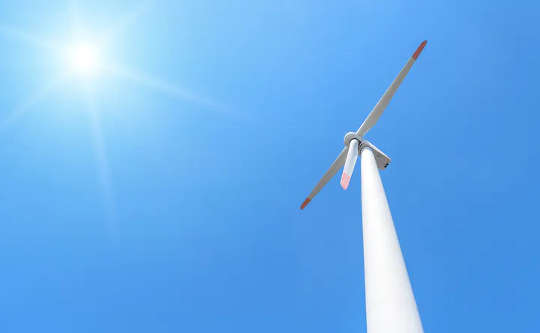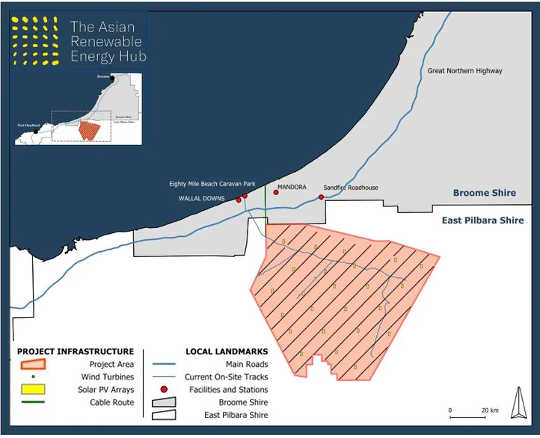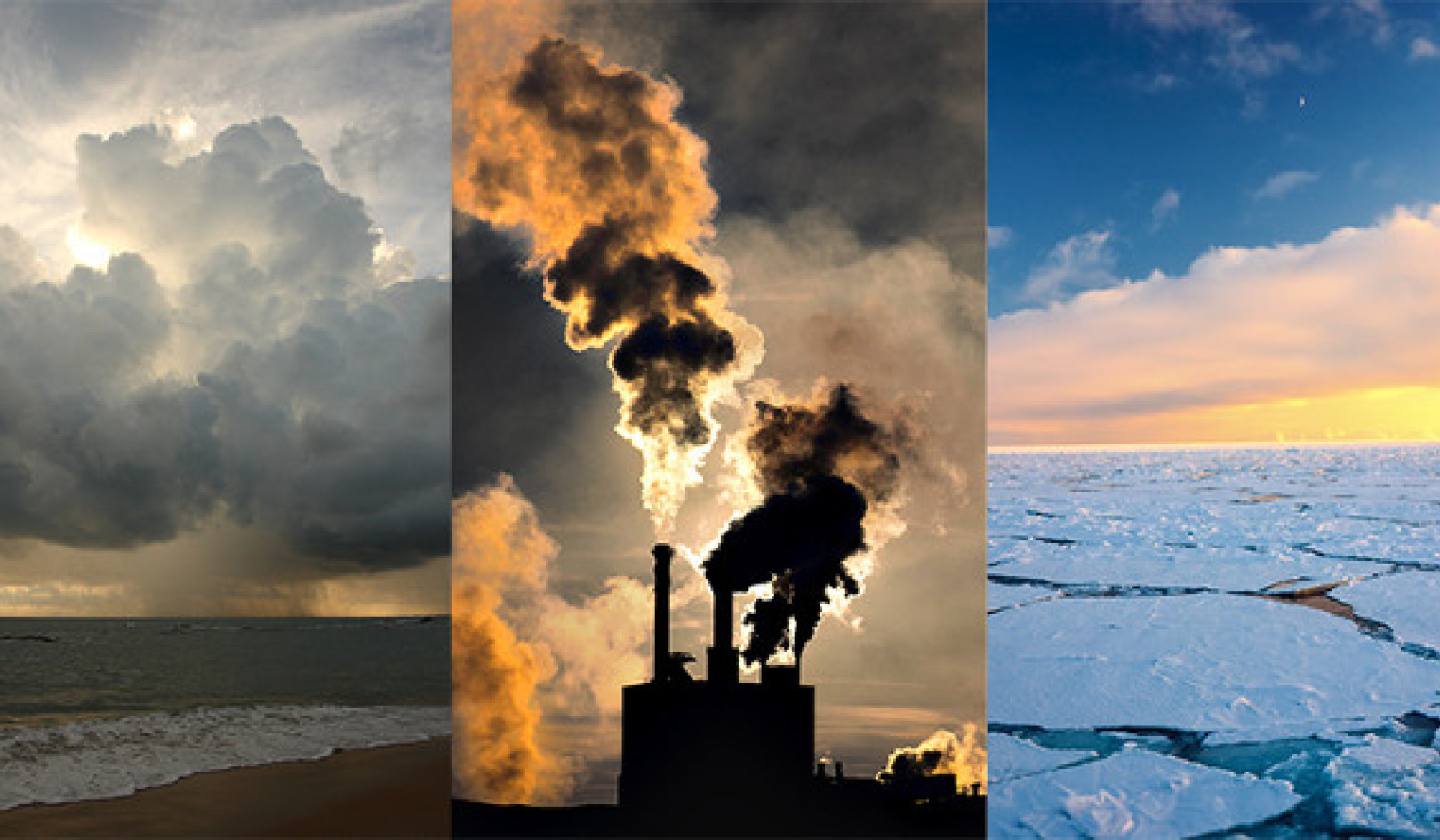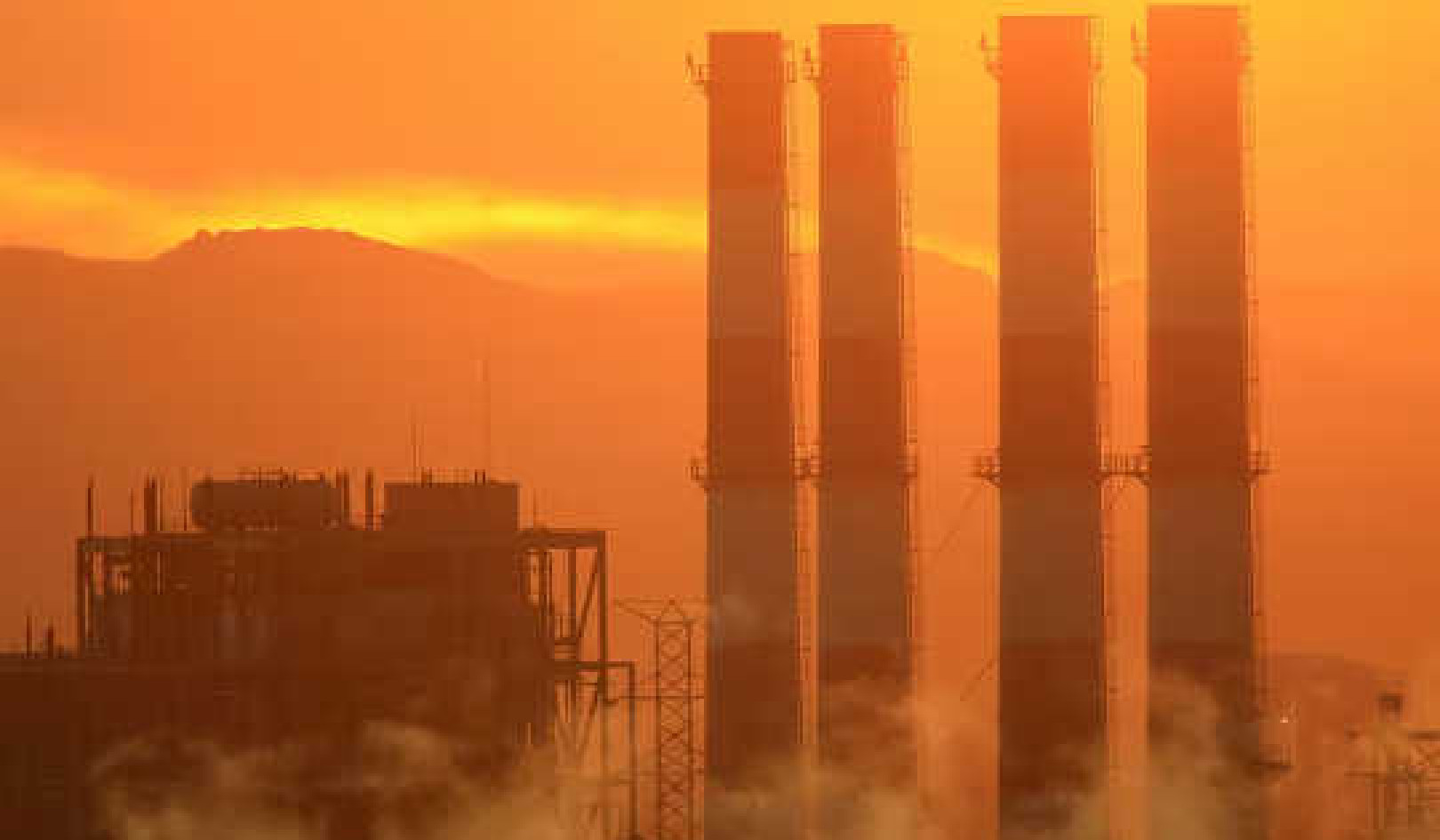
Shutterstock
Australia doesn’t yet export renewable energy. But the writing is on the wall: demand for Australia’s fossil fuel exports is likely to dwindle soon, and we must replace it at massive scale.
The proposed Asian Renewable Energy Hub (AREH) will be a huge step forward. It would eventually comprise 26,000 megawatts (MW) of wind and solar energy, generated in Western Australia’s Pilbara region. Once complete, it would be Australia’s biggest renewable energy development, and potentially the largest of its type in the world.
Late last week, the federal government granted AREH “major project” status, meaning it will be fast-tracked through the approvals process. And in another significant step, the WA government this month gave environmental approval for the project’s first stage.
The mega-venture still faces sizeable challenges. But it promises to be a game-changer for Australia’s lucrative energy export business and will reshape the local renewables sector.
 Map showing proposed location of the Asian Renewable Energy Hub. AREH
Map showing proposed location of the Asian Renewable Energy Hub. AREH
Writing on the wall
Australia’s coal and gas exports have been growing for decades, and in 2019-20 reached almost A$110 billion. Much of this energy has fuelled Asia’s rapid growth. However, in recent weeks, two of Australia’s largest Asian energy markets announced big moves away from fossil fuels.
China adopted a target of net-zero greenhouse emissions by 2060. Japan will retire its fleet of old coal-fired generation by 2030, and will introduce legally binding targets to reach net-zero emissions by 2050.
There are signs other Asian nations are also moving. Singapore has weak climate targets, but on Monday inked a deal with Australia to cooperate on low-emissions technologies.
Export evolution
The Asian Renewable Energy Hub (AREH) would be built across 6,500 square kilometres in the East Pilbara. The first stage involves a 10,000MW wind farm plus 5,000MW of solar generation – which the federal government says would make it the world’s largest wind and solar electricity plant.
The first stage would be capable of generating 100 terawatt-hours of renewable electricity each year. That equates to about 40% of Australia’s total electricity generation in 2019. AREH recently expanded its longer term plans to 26,000MW.
The project is backed by a consortium of global renewables developers. Most energy from AREH will be used to produce green hydrogen and ammonia to be used both domestically, and for shipping to export markets. Some energy from AREH will also be exported as electricity, carried by an undersea electrical cable.
Another Australian project is also seeking to export renewable power to Asia. The 10-gigawatt Sun Cable project, backed by tech entrepreneur Mike Cannon-Brookes, involves a solar farm across 15,000 hectares near Tennant Creek, in the Northern Territory. Power generated will supply Darwin and be exported to Singapore via a 3,800km electrical cable along the sea floor.
The export markets for both AREH and Sun Cable are there. For example, both South Korea and Japan have indicated strong interest in Australia’s green hydrogen to decarbonise their economies and secure energy supplies.
But we should not underestimate the obstacles standing in the way of the projects. Both will require massive investment. Sun Cable, for example, will cost an estimated A$20 billion to build. The Asian Renewable Energy Hub will reportedly require as much as A$50 billion.
The projects are also at the cutting edge of technology, in terms of the assembly of the solar array, the wind turbines and batteries. Transport of hydrogen by ship is still at the pilot stage, and commercially unproven. And the projects must navigate complex approvals and regulatory processes, in both Australia and Asia.
But the projects have good strategic leadership, and a clear mission to put Australian green energy exports on the map.
 Australia’s Pilbara region would be home to Australia’s biggest renewables development. Shutterstock
Australia’s Pilbara region would be home to Australia’s biggest renewables development. Shutterstock
Shifting winds
Together, the AREH and Sun Cable projects do not yet make a trend. But they clearly indicate a shift in mindset on the part of investors.
The projects promise enormous clean development opportunities for Australia’s north, and will create thousands of jobs in Australia – especially in high-tech manufacturing. As we look to rebuild the economy after the COVID-19 pandemic, such stimulus will be key. All up, AREH is expected to support more than 20,000 jobs during a decade of construction, and 3,000 jobs when fully operating.
To make smart policies and investments, the federal government must have a clear view of the future global economy. Patterns of energy consumption in Asia are shifting away from fossil fuels, and Australia’s exports must move with them.
About the Authors
John Mathews, Professor Emeritus, Macquarie Business School, Macquarie University; Elizabeth Thurbon, Scientia Associate Professor in International Relations / International Political Economy, UNSW; Hao Tan, Associate professor, University of Newcastle, and Sung-Young Kim, Senior Lecturer in International Relations, Discipline of Politics & International Relations, Macquarie School of Social Sciences, Macquarie University
This article is republished from The Conversation under a Creative Commons license. Read the original article.
Related Books
Climate Adaptation Finance and Investment in California
by Jesse M. Keenan This book serves as a guide for local governments and private enterprises as they navigate the unchartered waters of investing in climate change adaptation and resilience. This book serves not only as a resource guide for identifying potential funding sources but also as a roadmap for asset management and public finance processes. It highlights practical synergies between funding mechanisms, as well as the conflicts that may arise between varying interests and strategies. While the main focus of this work is on the State of California, this book offers broader insights for how states, local governments and private enterprises can take those critical first steps in investing in society’s collective adaptation to climate change. Available On Amazon
This book serves as a guide for local governments and private enterprises as they navigate the unchartered waters of investing in climate change adaptation and resilience. This book serves not only as a resource guide for identifying potential funding sources but also as a roadmap for asset management and public finance processes. It highlights practical synergies between funding mechanisms, as well as the conflicts that may arise between varying interests and strategies. While the main focus of this work is on the State of California, this book offers broader insights for how states, local governments and private enterprises can take those critical first steps in investing in society’s collective adaptation to climate change. Available On Amazon
Nature-Based Solutions to Climate Change Adaptation in Urban Areas: Linkages between Science, Policy and Practice
by Nadja Kabisch, Horst Korn, Jutta Stadler, Aletta Bonn This open access book brings together research findings and experiences from science, policy and practice to highlight and debate the importance of nature-based solutions to climate change adaptation in urban areas. Emphasis is given to the potential of nature-based approaches to create multiple-benefits for society.
This open access book brings together research findings and experiences from science, policy and practice to highlight and debate the importance of nature-based solutions to climate change adaptation in urban areas. Emphasis is given to the potential of nature-based approaches to create multiple-benefits for society.
The expert contributions present recommendations for creating synergies between ongoing policy processes, scientific programmes and practical implementation of climate change and nature conservation measures in global urban areas. Available On Amazon
A Critical Approach to Climate Change Adaptation: Discourses, Policies and Practices
by Silja Klepp, Libertad Chavez-Rodriguez This edited volume brings together critical research on climate change adaptation discourses, policies, and practices from a multi-disciplinary perspective. Drawing on examples from countries including Colombia, Mexico, Canada, Germany, Russia, Tanzania, Indonesia, and the Pacific Islands, the chapters describe how adaptation measures are interpreted, transformed, and implemented at grassroots level and how these measures are changing or interfering with power relations, legal pluralismm and local (ecological) knowledge. As a whole, the book challenges established perspectives of climate change adaptation by taking into account issues of cultural diversity, environmental justicem and human rights, as well as feminist or intersectional approaches. This innovative approach allows for analyses of the new configurations of knowledge and power that are evolving in the name of climate change adaptation. Available On Amazon
This edited volume brings together critical research on climate change adaptation discourses, policies, and practices from a multi-disciplinary perspective. Drawing on examples from countries including Colombia, Mexico, Canada, Germany, Russia, Tanzania, Indonesia, and the Pacific Islands, the chapters describe how adaptation measures are interpreted, transformed, and implemented at grassroots level and how these measures are changing or interfering with power relations, legal pluralismm and local (ecological) knowledge. As a whole, the book challenges established perspectives of climate change adaptation by taking into account issues of cultural diversity, environmental justicem and human rights, as well as feminist or intersectional approaches. This innovative approach allows for analyses of the new configurations of knowledge and power that are evolving in the name of climate change adaptation. Available On Amazon
From The Publisher:
Purchases on Amazon go to defray the cost of bringing you InnerSelf.comelf.com, MightyNatural.com, and ClimateImpactNews.com at no cost and without advertisers that track your browsing habits. Even if you click on a link but don't buy these selected products, anything else you buy in that same visit on Amazon pays us a small commission. There is no additional cost to you, so please contribute to the effort. You can also use this link to use to Amazon at any time so you can help support our efforts.

























